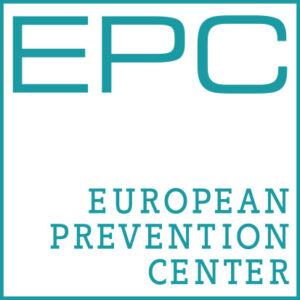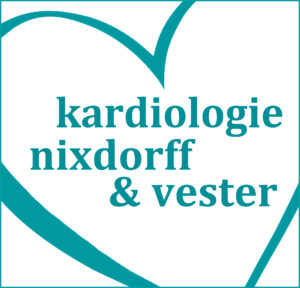PATHWAY & GLOSSARY
Laboratory values
CBC
White blood cells; increased numbers usually indicate bacterial infection; occasionally also indicate blood cancer.
Red blood cells; if too low, indicates bleeding or hematopoiesis problems.
Blood pigment, if decreased indicates anemia (anemia) due to bleeding or hematopoiesis problems.
Ratio of solid to liquid components in the blood.
Cell volume of red blood cells; possible indication of the cause of anemia.
Blood pigment content of the individual red blood cells; also an indication of the cause of anemia.
Blood platelets; are responsible for clot formation due to platelet aggregation in the case of corresponding (injury) irritations (in addition to e.g. external body injuries also internal arterial wall changes).
Subgroup of white blood cells that, when elevated, indicate bacterial infection in particular.
Subgroup of white blood cells that, when elevated, indicate bacterial infection in particular.
Subgroup of white blood cells.
Subgroup of white blood cells, which in case of increase indicate allergy or also infection with protozoa, worms.
Subgroup of white blood cells that, when elevated, indicate mostly viral infections.
Subgroup of white blood cells which, when elevated, usually indicate certain viral infections (e.g. Epstein Barr virus; so-called Pfeiffer's glandular fever).
Blood glucose values
Blood glucose, usually determined on fasting; elevation indicates diabetic metabolic state.
Glycosylated hemoglobin (blood pigment); "long-term marker" of blood glucose regulation over the past 3 months; important in diabetes diagnosis and monitoring.
Ratio of glucose (blood sugar) and insulin; elevated values indicate so-called insulin resistance (especially in so-called metabolic syndrome in obesity; without preventive measures, early stage of developing diabetes mellitus).
Cholesterol status
Blood fatty substance needed for many hormone and cell walls.
"Bad" cholesterol that causes atherosclerosis (vessel wall thickening and injury as a cause of heart attack and stroke) in arterial vessel walls.
"Good" cholesterol, which prevents atherosclerosis in arterial vessel walls by moving LDL cholesterol out of the wall to the liver, where it can be excreted; may be increased by fitness training in a prognostically relevant manner.
Neutral fats, increased depending on diet and exercise, also risk to atherosclerosis development.
Liver / bile / pancreas values
Transaminase; elevated in liver afflictions (especially alcohol, hepatitis, storage diseases, certain drug side effects, etc.).
Transaminase; elevated in liver afflictions (hepatitis, storage diseases, alcohol, certain drug side effects, etc.); also elevated in myocardial infarction.
Transaminase; elevated in liver afflictions (hepatitis, storage diseases, alcohol, certain drug side effects, etc.).
Treatment occasions
Various causes can facilitate the development of heartbreak. We will help you identify the cause.
Heart failure, i.e. usually shortness of breath with limited pumping power or filling problem of the left ventricle.
Chronic coronary syndrome (CCS) resp. coronary heart disease (CHD). CHD; i.e. often chest pain (angina pectoris) due to blockages of the coronary vessels with insufficient blood supply to the heart muscle.
Congenital or acquired vitiation.
Vitia; i.e., either narrowing or leakage of heart valves that can lead to symptoms such as shortness of breath."
Arrhyhtmias; i.e., irregularities in the formation or conduction of excitation; either at the atrial or cardiac ridge level, possibly leading to symptoms such as dizziness and even unconsciousness.
"Arterial hypertension; i.e., elevated blood pressure levels with various causes that are an important risk factor for atherosclerosis, arterial wall thickening and calcification, including myocardial infarction."
Myocarditis; i.e., internal cardiac muscle disease that can lead to pumping disorders of the left ventricle.
Diabetes mellitus / insulin resistance, which pose a significant cardiovascular risk and therefore need to be adjusted.
Obesity / with metabolic syndrome; i.e. currently the highest cardiovascular risk; so that here the measurement and intensive medical consultation is of great preventive importance.
In addition to organic causes, we deal with their psychosocial context and help you actively reduce stress in everyday life.
Research methods
As part of our check-ups, we perform various examinations depending on the package. In the Executive Check-Up, we offer additional, add-on services according to a points system. You can find these here:
In addition, you have the option of receiving certain services in our affiliated private practice. Below you will find an explanation of the relevant parameters of the respective examinations.
Collection of all causal risk factors and overall risk calculation with scoring systems
A low-threshold current passed unnoticed through the prone body measures its composition of fat, muscle and water content. Important information for the consultation is generated.
In knowledge of the differentiated disease theory, laboratory values far beyond the usual are analyzed, partly in the practice with point-of-care (POC) devices, partly in different laboratories in Düsseldorf, Munich, Berlin. Important are specific inflammation parameters from the plaque, immune status, periodontitis biomarkers (as risk of myocardial infarction), hormone analyses, special tumor markers.
Current waveform registration for detection of myocardial problems and/or arrhythmias
Safe diagnosis of hypertension with Riva-Rocci measurement on the upper arm based on European guidelines
Ultrasound method with detection of blood flow velocity with circulatory disturbance, if any.
Ultrasound of the heart to detect or exclude structural heart disease using the latest high-end equipment (Epiq Elite®, Philips)
Ultrasound examination via a probe through the esophagus and stomach for special questions using the latest high-end equipment (Epiq Elite®, Philips)
Highly sensitive and specific stress test to detect or exclude circulatory disorders of the heart (Epiq Elite®, Philips)
Measurement of forced expiratory volume as well as vital capacity for the detection of bronchial and lung framework changes (spirometer, custo)
Magnetic resonance imaging (MRI) (Magnetom Avanto®, Siemens), computed tomography (MSCT) (SOMATOM Definition AS®, Siemens); scintigraphy (D-SPECT Gamma Camera®, Spectrum Dynamics) (latest generations of equipment) as methodically different procedures for the generation of detailed sectional images of tissue in internal close / interdisciplinary cooperation with radios
Exercise testing with recording of inhaled and exhaled gases; measurement of the golden standards of cardiopulmonary function (fitness) based on maximal oxygen uptake and anaerobic threshold (cortex and custo).
The telemedical ophthalmology partner of the University Hospital Erlangen uses a standardized fundus camera to analyze the fundus of the eye (TalkingEye), which can be important in cases of hypertension and chronic coronary syndrome.
Registration of consecutive, variable heart action durations to determine the (dys)balance of sympathetic and parasympathetic nervous systems (autonomic nervous system), thus objective recording of stress vs. relaxation
Registration of the pulse wave course with measurement of pulse wave velocity and augmentation index as well as central blood pressure; thus recording of elasticity or stiffness of the arteries (Arteriograph®, Tensomed; Vicorder®, 80 Beats Medical); furthermore also measurement of flow mediated slowing (FMS) similar to flow mediated dilatation (FMD) for recording of endothelial dysfunction (earliest arterial change) Vicorder®, 80 Beats Medical)
Measurement of advanced glycation endproducts (AGE Reader®; 80 Beats Medical), i.e. saccharified proteins in tissue, which thus cause arterial vessel wall changes (atherosclerosis) as well as tissue aging (similar to the background of HbA1c measurements in blood)
The functional and imaging methods are integrated into a practice information system (PIS; Medistar CGM®, CompuGroup Medical) at the most modern IT level, in which all medical data are also digitized (paperless). Radiological image documentation (radios) is linked to the practice via a PACS (picture archiving and communication system) networked; communication via QR codes also independent of location and time with patients and other physicians providing care.
Treatment procedure
Differentiated pharmacotherapy based on state-of-the-art drugs (current phase III trials / European guidelines), pharmacogenetics if necessary
Coaching of all 3 lifestyle pillars, i.e. exercise, nutrition, relaxation.
Organization of interventional measures such as cardiac catheterization or surgical measures such as bypass or heart valve operations in the personal cardiological network with cardiac clinics after extensive and goal-oriented, non-invasive diagnostics; closest personal cooperation here
We will be happy to advise you on a specific medical or personal concern and provide you with an assessment


